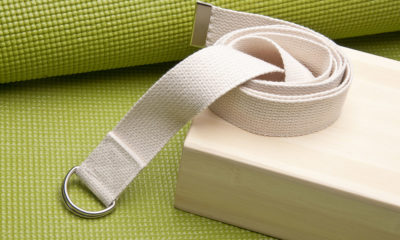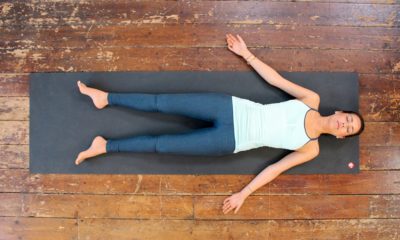Exercise is a critical component in the management of Diabetes. Fitness training can assist improve your body’s ability to regulate blood sugar, generally increase your fitness, and prevent heart disease and stroke.
But exercising while diabetic has its peculiar challenges. Safe exercising will require close monitoring of your blood sugar before, during and after exercise. With this, you will know exactly how physical activity affects your body which helps you avoid dangerous blood sugar swings.
Pre-exercise: Check your blood sugar.
When you are ready to become more active with a fitness regimen, getting approval from your doctor is the way to go. Discuss with your doctor the kinds of exercises you want to start, the best time to work out and the effect of any medication on your blood sugar as you commence exercising.
To derive maximum health gains with physical exercise, experts advocate a minimum of 150 minutes of relatively light physical activities like:
- Rapid walking
- Swimming
- Cycling
If you’re on insulin medication or any other treatment that can cause low blood sugar (hypoglycemia), check your blood sugar 30 minutes before starting exercise.
Here are some general guidelines to be considered regarding your blood sugar level—measured in milligrams per deciliter (mg/dL) or millimoles per liter (mmol/L).
- Lower than 100 mg/dL (5.6 mmol/L). Your blood sugar is considered too low for exercising. Consume about 15 to 30 grams of carbohydrates by drinking some fruit juice, munching on fruit or crackers, or chewing glucose tablets before starting exercise.
- 100 to 250 mg/dL (5.6 to 13.9 mmol/L). You’re in the clear. This is generally considered to be a safe pre-exercise blood sugar range for most people.
- 250 mg/dL (13.9 mmol/L) or higher. This is a red flag. Your blood sugar may be too high for safe exercise. Before exercising, check your urine for ketones—by-products of the breakdown of fat for energy in the body. The presence of ketones shows that you lack sufficient insulin to regulate your blood sugar.
When your ketone levels are high, even moderate exercise could put you at risk of ketoacidosis—a grave complication of diabetes that requires urgent medical attention. What you must do is to regularise your high blood sugar levels and refrain from exercising till further test indicate the absence of ketones in your urine
During exercise: be on the lookout for signs of low blood sugar.
While exercising, you might have to watch out for low blood sugar. Check your blood sugar every 30 minutes if you plan to work out for more extended periods. This is important too for when you start a new activity or plan to crank things up a bit. Monitoring your blood every 30 minutes or so lets you know whether your blood sugar level is stable, rising, or falling, and if it’s safe to continue.
This might be tough to implement if you’re engaging in an outdoor sport or activity.
However, it is a necessary precaution till you find out how your body responds to your increased physical activity.
Stop exercising immediately if:
- Your blood sugar is 70 mg/dL (3.9 mmol/L) or lower
- You feel unsteady, weak, or disoriented
Raise your blood sugar by consuming something with about 15 to 20 grams of fast-acting carbohydrate such as:
- Glucose tablets or gel (scan the label to see the carbohydrate content)
- 1/2 cup (4 ounces/118 milliliters) of fruit juice
- 1/2 cup (4 ounces/118 milliliters) of regular (NON-diet) soft drink
- Hard candy, jelly beans, or candy corn (check the label to see the carbohydrate content)
Recheck your blood sugar 15 minutes later. If it’s still too low, have another 15-gram carbohydrate serving and retest 15 minutes later.
Repeat as necessary until your blood sugar reaches at least 70 mg/dL (3.9 mmol/L). If you still want to finish your exercise, you can continue once your blood sugar returns to a safe range.
Post-exercise: Recheck your blood sugar.
Recheck your blood sugar once you finish exercising and check again at intervals for the next couple of hours. Exercise uses up extra sugar stored in your muscles and liver. Sugar is then taken from your blood to replenish this store.
The harder you work out, the longer the effect on your blood sugar will last. Low blood sugar could happen even four to eight hours after exercise. Eating something with slower-acting carbohydrates, like a granola bar or trail mix, after your workout can stop your blood sugar from dropping.
If your blood sugar is confirmed low after exercise, eat something with carbohydrates such as fruit, crackers, or glucose tablets, or drink a half-cup (4 ounces/118 milliliters) of fruit juice.
The health benefits of exercise are numerous, but if you’re dealing with diabetes, constant monitoring of your blood sugar is essential for a safe workout.
Health
Why Do the Corners of My Mouth Crack—and How Do I Fix It?

It took me a while to realize that I had angular cheilitis. Because it was winter and I didn’t fancy lip balm, I had initially assumed it to be a nasty case of chapped lips. But despite all my attempts to get rid of it, the cracks at the corner of my mouth stayed put.
I went about my business on my college campus with self-conscious resignation till I finally went to a dermatologist.
One look and he instantly diagnosed it as angular cheilitis (sounds like key-litis).
Angular cheilitis is an inflammation of the area around the mouth corners which causes them to become red, swollen and cracked. Apart from its unsightly appearance, it is also painful.
Fortunately, once diagnosed and properly treated, the cracks disappeared in a few days. But before going to see the dermatologist, living with the condition was terrible. Not having any idea of what caused the cracks, what they were, and if they would ever clear were a steady source of worry and low self-esteem. Knowing what causes angular cheilitis and more critically, how to make it go away, makes the condition less fearful.
Unlike chapped lips – which is usually due to a lack of moisture, angular cheilitis is a fungal infection.
Your mouth is an ecosystem of sorts where many species of bacteria, viruses, and fungi (including Candida albicans, a fungus) thrive. Candida Albicans often exists harmlessly in your mouth and other parts of the body, but can sometimes grow out of control and causes candidiasis – an infection also known as yeast infection.
But how exactly does this fungus cause angular cheilitis? Oddly, saliva that comes into contact with the corners of your mouth can dry them out, leading to fissures and cracks, Ted Lain, M.D., chief medical officer of Sanova Dermatology, says. When you try to sooth the irritating dryness by licking your lips, you introduce yeast into the open wounds. “It’s just a breeding ground for yeast to grow,” Dr. Lain says.
Some factors make you more likely to have Angular cheilitis.
A lot of factors determine the possibility of coming down with angular cheilitis. One of them is down syndrome. This could be due to muscular hypotonia, a condition characterized by low muscle tone. It makes people with down syndrome to leave their mouth open, and their tongues hang out, irritating the corners of their mouth.
Xerostomia or dry mouth also increases your chances of developing angular cheilitis. Xerostomia is usually caused by dehydration, health conditions that lead to dehydration (like diabetes), drugs that irritate the skin, or side effects of treatments like chemotherapy.
Xerostomia is associated with the autoimmune condition Sjogren’s syndrome. Lupus, Crohn’s disease, and Ulcerative Colitis are some of the other autoimmune disorders which can cause changes in the immune system leading to a higher possibility of angular cheilitis.
Inadequate nutrition is also a culprit. Studies have linked iron deficiency which causes anemia to angular cheilitis. The possible reason is that iron deficiency can lower your immunity. Deficiencies in some B vitamins and zinc have also been linked to angular cheilitis, probably due to their immune-strengthening role.
These risk factors indicate that older people are more susceptible to suffer from angular cheilitis. For instance, ageing makes people more likely to suffer from dry mouth. Their immune system is also easily compromised, making it tough for them fight off infections, says Dr. Lain. The additional risk lies in age-related changes around their mouths, says Joshua Zeichner, M.D., director of cosmetic and clinical research in dermatology at Mount Sinai Hospital. “When older individuals lose the structural support around the mouth, the corners tend to turn downward, and you develop folds in those corners, where saliva tends to pool,” Dr. Zeichner says.
As it is, angular cheilitis can still afflict anyone at any age; there are other random risk factors to be considered. It can happen to some people due to changes in the weather which causes dry skin and lips, according to Dr. Lain. Mine started as winter set in and I resumed going to bed wearing my nightly retainers, which is another common contributing cause. “Any kind of appliance you have in your mouth—braces, retainers, or anything else that change the anatomy of your mouth—can affect what happens to your saliva while you sleep,” Dr. Lain says.
Angular cheilitis is easy to treat.
Most dermatologists and oral medicine specialists can diagnose angular cheilitis instantly. “The appearance is pretty characteristic,” says Dr. Zeichner. It is treated with a topical corticosteroid to reduce inflammation and an antifungal cream to eliminate fungal overgrowth, A. Ross Kerr, D.D.S., an oral medicine specialist and clinical professor in the Department of Oral and Maxillofacial Pathology, Radiology, and Medicine, and New York University College of Dentistry, says.
If you notice cracks appearing at the corners of your mouth and you are unable to see a dermatologist, Dr. Zeichner recommends using a 1-percent hydrocortisone cream together with an over-the-counter antifungal, such as the type used to treat athlete’s foot. The antifungal cream can be used alone to clear the infection, unlike a topical corticosteroid which could further aggravate the condition. “A corticosteroid decreases the immune system where you apply it, so it makes any infection get worse,” says Dr. Lain.
If you have a mild case of angular cheilitis, this DIY treatment may be enough for you. “If you’re trying a home remedy and it’s not getting any better after a week or two, make sure to visit a dermatologist to get some extra help,” says Dr. Zeichner.
Angular cheilitis can be prevented. Most times.
Luckily, I haven’t had angular cheilitis in years, but writing this article resurrected my old fears. If you had had angular cheilitis before, fret not: there are hacks which could help reduce your chances of suffering the cracks again. At night, apply a lotion that contains petroleum jelly around your lips. “[This] can help provide a seal over the skin to prevent saliva from disrupting the outer layer,” says Dr. Zeichner.
Ensure you stay hydrated at all times, especially during winter, to counter dryness. Also, make good oral hygiene practices a daily habit to keep the ecosystem in your mouth under control, Dr. Kerr says.
Try to control any urge to lick your lips. “We tend to lick our lips and the angles of our mouths much more frequently to combat dryness, but the more you do that, the worse it gets,” says Dr. Kerr.
Lastly, if you are in the habit of consuming excess sugar and the corners of your mouth are always inflamed, try eliminating sugar in your diet because the candida yeast thrives on it, Dr. Kerr explains.
If you take these precautions and the cracks still constantly reoccur, see your doctor to find out the cause. “You could be predisposed to developing candidiasis because your immune system isn’t functioning the way it normally should,” says Dr. Kerr. Getting treatment for any underlying health issue may keep you from suffering another outbreak of angular cheilitis.
Health
Effectively Treating Yeast Infections During Pregnancy

Is it ok to use over the counter medication for yeast infections?
We look at the best ways to treat yeast infection and these answers from Yvonne Butler, M.D will guide us.
You can easily treat yeast infections with different kinds of antifungal vaginal creams found in stores even during pregnancy. But it is wise to confirm from your health care provider that you actually have the symptoms from a yeast infection before seeking treatment options.
Yeast infections are more likely to occur during pregnancy due to all the hormonal changes and pH balance of the vagina. The symptoms usually manifest in the form of itching and discharge of a thick white substance.
Medication such as Miconazole (Monistat) and Clotrimazole (Gyne-Lotrimin) can be found in your typical drug stores. These medications can be used at any time during your pregnancy and pose no risk or side effects of your pregnancy. It is best to stick to a 7-day formula. Home remedies are heavily discouraged.
Certain medications that are commonly prescribed such as fluconazole are also discouraged especially during the first three months. If you see a doctor for treatment of yeast infection and you happen to be pregnant, make sure to make this known to avoid prescription of that particular med.
Health
Camila Cabello and Her Journey with Obsessive Compulsive Disorder

It often takes time to finally accept any diagnosis that pertains to mental health. Camila Cabello reveals in her interview with the Cosmopolitan UK how she has journeyed to a place in her life when she can finally distance herself from her obsessive-compulsive disorder and better deal with it.
“OCD is weird. I laugh about it now,” Cabello said in the interview, as reported by E! Online. “Everybody has different ways of handling stress. And, for me, if I get really stressed thinking about something, I’ll start to have the same thought over and over again, and no matter how many times I get to the resolution, I feel like something bad is about to happen if I don’t keep thinking about it.”
In another interview with Billboard in 2016, she revealed that she went through times of constant anxiety in her life and it was a very bad place for her. She described her heart beating furiously throughout the day and she would need to take up to two hour naps to calm down.
It got so bad one time that she had to leave in the middle of a Fifth Harmony concert that year. She later indicated that it was due to her excess anxiety during her set. Her story is different now after her diagnosis and she understands how her body works. “I didn’t know what it was and when I found out, and [learned] how to step back from it, it made me feel so much better,” she says in her Cosmo U.K. cover story. “I feel so much more in control of it now. To the point where I’m just like, ‘Aha! OK, this is just my OCD.’ I’ll ask my mom a question for the fourth time, and she’ll be like, ‘That’s OCD. You’ve got to let it go.'”
Popular Misconception
Contrary to popular belief, OCD does not always equate to having detailed complex cleaning rituals or counting. It is basically a compulsion to do things repeatedly and cleaning happens to be one of those things. This compulsion becomes a problem when it starts to interfere with your day to day life. It can also be fear and anxiety in certain situations.
The first step to dealing with any problem is actually identifying he problem.
Health
Managing Stress: Identifying Your Triggers

Know your triggers and you’ve solved half the problem.
Life comes at you fast sometimes and there is a flurry of things to get done. This all leads to stress. Identifying the kinds of stress is the first step of managing them.
Types
Stress is your response to the challenges of this world. Stressors are those things that contribute to your stress in your environment. Your body deals with these stressors uniquely depending on the nature- short term or cute stress and long-term or chronic stress.
Short Term Stress
This is also known as acute stress and as the name implies, this is stress that is abrupt and your body is going to respond immediately to this stress in a fight, flight or freeze manner. This can be very telling on the body. Some instances of this stress can be found in job interviews, being stopped by the police etc.
A single occurrence of this kind of stress typically doesn’t do any damage but when it is severe it can lead to mental problems such as post-traumatic stress disorder. It can also manifest physically in terms of headaches, stomach aches, and even a heart attack.
Long Term Stress
This is also known as chronic stress. While mid acute stress can be helpful to you in small doses as it helps motivate you into action, long-term stress is always bad news. Stress becomes chronic when stressors are consistent and persistent and this can lead to a variety of health problems such as headaches and insomnia. While the effects of chronic stress are not easily noticeable, they tend to do the most damage over a prolonged period of time.
Identify your Stressors
The first step to managing stress is knowing what causes them. Strategies to handle stress can then be fashioned out in a manner that best suits you. You can do this by writing down every scenario, circumstance, and obstacle that triggers your stress response. You will find that some of your stressors are external while others are internal.
External Stress
These are stressors that come from your environment and affect you as a result. Some examples are:
Major Life Changes: Change is constant in life but some changes are major and can have a huge effect on us. Examples are getting married, pregnancy and death of a loved one or a divorce. You will notice that the changes can be both positive and negative.
Environment: Everything in your surroundings can add to your stress levels. Noises, Intense lights, dull lights and even smells can trigger a stress response.
Random events: when things happen without your knowledge, you are denied the opportunity to plan and set up to accommodate these events and it can lead to stress. Think about uninvited guests, unexpected news etc.
Jobs: This is perhaps one of the leading causes of stress. Having to deal with all the intricacies of work can really take its toll on your body on a daily basis.
Social: interacting with people can be stressful in itself especially when they are strangers. Think about social events or dates.
You can deal with external stress mainly by committing to a better lifestyle such as eating healthy, being physically active and getting enough rest. You should also be open to asking for help when things get crazy, manage your time more effectively and try to laugh more.
Internal Stress
Some stress is within and has nothing to do with the environment around us. Those voices that pop up in your head and tell you all sorts are the main culprits here. It can manifest in the form of fears. Fear of facing a crowd or a fear of heights. It can also be rooted in your beliefs and this extends into your attitude and expectations. Usually, you don’t even realize how much these things affect you.
The bright side here is that you have total control over your mind and how your thoughts affect you. The danger is that these internal fears and beliefs have been a part of you for so long that it will take a lot of work to rid your mind of them. Try to imbibe a positive attitude, embrace relaxation techniques and talk to people who can help.
Identifying the problem is the crucial first step to dealing with the issues and consequently better managing your stress.
-

 Lifestyle6 years ago
Lifestyle6 years agoWe Don’t Know How Lucky We Have It
-

 Fashion6 years ago
Fashion6 years agoJessica Biel Partners with Gaiam on New Line
-

 Fashion6 years ago
Fashion6 years agoAerie’s Brand New Swim Campaign goes personal: Features Aly Raisman and mom
-

 Lifestyle6 years ago
Lifestyle6 years ago5 Reasons You Shouldn’t Feel Bad About Using Props for Yoga
-

 Health6 years ago
Health6 years agoWhy Do the Corners of My Mouth Crack—and How Do I Fix It?
-

 Fashion6 years ago
Fashion6 years agoThis is how to make your wardrobe more sustainable
-

 Health6 years ago
Health6 years agoWhy You Must Stick with Savasana
-

 Fashion6 years ago
Fashion6 years agoStylish Sportswear That Actually Makes You Want to Work Out

